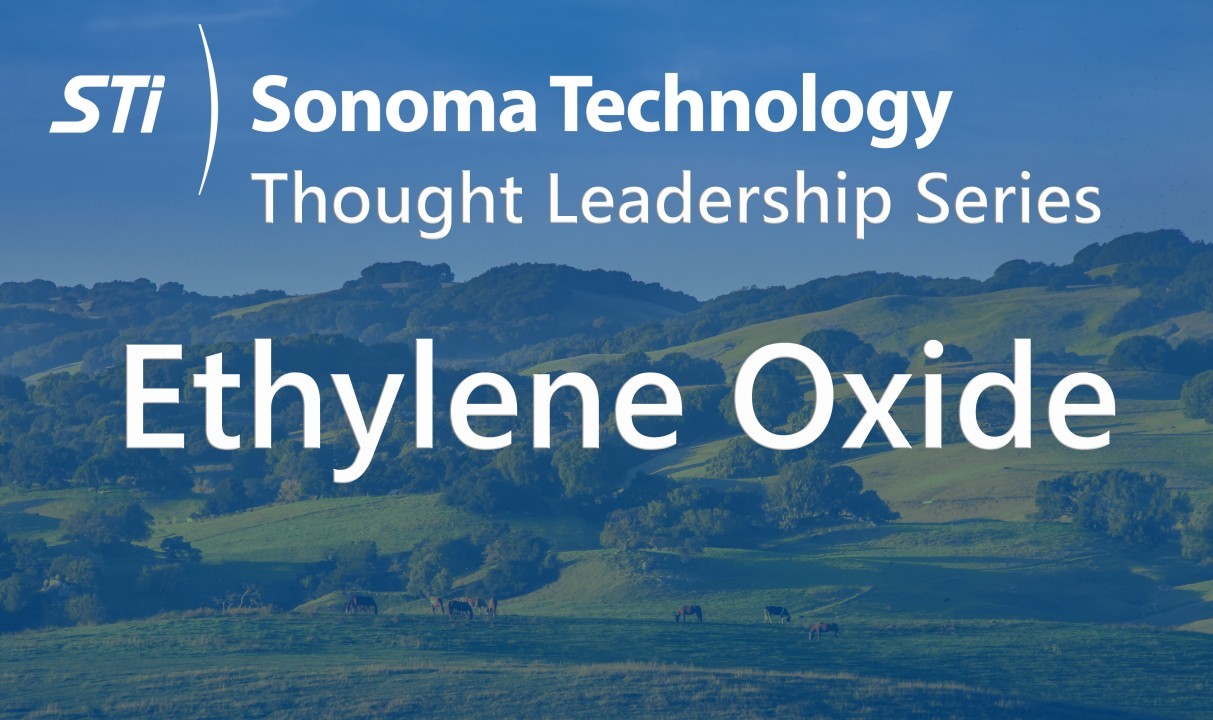Published April 2024
Regulations for Ethylene Oxide (EtO) have been developing rapidly over the last several years, as covered in our April 2022 blog “Emerging Regulations for Ethylene Oxide” and October 2023 blog “Updated Regulations for Ethylene Oxide.” In the last two months, the U.S. Environmental Protection Agency (EPA) strengthened requirements for industrial facilities by passing several of the regulations being considered when our last update was published. California also passed a regulation complementing these Federal regulations in December of last year.
Background
EtO is federally regulated by the 1970 Clean Air Act (CAA), which covers all air emission sources. As part of this Act, National Emissions Standards for Hazardous Air Pollutants (NESHAPs) were created to regulate emission levels for HAPs at stationary sources. Regulations under the CAA and NESHAPs are routinely reviewed and updated, and these efforts have increased since EtO was classified as a carcinogen in 2016 and risk levels were updated to reflect higher health impacts at lower levels of EtO exposure.
Approved Federal Regulations
HON Rule
Status: EPA passed and signed the final version on March 28, 2024.
Who Will it Impact?: Synthetic organic chemical plants that manufacture EtO.
Details: HON stands for Hazardous Organic NESHAP, and is comprised of four rules that cover specific processes and equipment at manufacturing plants that make and sell synthetic organic chemicals used in the production of other chemicals. These stricter regulations will impact more than 200 facilities that produce EtO across the country, and will have the most significant impact on 8 large facilities in Texas and Louisiana. EPA is reporting that full implementation of the plan would reduce EtO emissions by 6,053 tons of air toxics emissions and 23,500 tons of smog-forming volatile organic compounds (VOCs) per year.
Federal Insecticide, Fungicide Rodenticide Act (FIFRA) Sterilization Facility Rule
Status: EPA announced a final, approved update to this rule on March 14, 2024.
Who Will it Impact?: Facilities that use EtO to sterilize medical equipment and spices.
Details: The new regulations will require 88 sterilization facilities owned and operated by around 50 companies across the country to install proven air pollution control measures to cut emissions by more than 90%. The regulation will also require continuous emissions monitoring and quarterly reports for the majority of commercial sterilizers that fall under this regulation. There is a tiered timeline for achieving compliance, where smaller companies are given longer to implement monitoring networks.
HTMLProcess<table style="width:100%">
<tr>
<th>Number of Facilities</th>
<th>Annual EtO Usage</th>
<th>Deadline for Compliance</th>
</tr>
<tr>
<td>28</td>
<td>>60 tons</td>
<td>2 years</td>
</tr>
<tr>
<td>39</td>
<td>1 – 60 tons</td>
<td>2-3 years</td>
</tr>
<tr>
<td>21</td>
<td><1 ton</td>
<td>3 years</td>
</tr>
</table>
HTMLProcess<style>
th {
color: white;
font-weight: bold;
background-color: #1f3b57;
border: 1px solid black;
padding-top: 5px;
padding-bottom: 5px;
text-align: center;
}
table {
border-collapse: collapse;
border-spacing: 0;
}
td {
border: 1px solid black;
padding-top: 5px;
padding-bottom: 5px;
padding-left: 5px;
}
</style>
Approved California Regulations
Amended Rule 1405: Control of Ethylene Oxide Emissions from Sterilization and Related Operations
Status: South Coast Air Quality Management District (AQMD) approved the amended rule on December 1, 2023.
Who Will it Impact?: This will impact 15 sterilization facilities and an unknown number of storage facilities and warehouses within the South Coast District, which includes large areas of Los Angeles, Orange, Riverside, and San Bernardino counties in California.
Details: The new rule amends the original regulation passed in 1990, and was drafted in response to EPA’s study of the cancer potency of EtO in 2022, which set the toxicity threshold for EtO 30 to 50 times higher than before. Facilities that are subject to the rule will need to upgrade or add pollution controls and conduct continuous monitoring. They will also have to mitigate stack or fugitive emissions. These efforts may include permanent fenceline monitoring, completely enclosing their facility to prevent fugitive emissions from leaving their building, and/or mobile monitoring.
How Can We Help?
Sonoma Technology is a recognized expert in designing custom monitoring systems to bring facilities into compliance with state and federal regulations. Our experienced team has successfully designed, installed, and operated regulatory fenceline monitoring networks that run continuously at 11 oil refineries and related facilities throughout California. Each of these networks are complemented by a custom-designed, public-facing website, public notification systems for concentration exceedances, and quarterly and/or monthly reporting. We have extensive experience with facilitating approval of our clients’ fenceline monitoring plans and aiding productive conversations with regulators. We also work with recycling facilities, landfills, sterilization facilities, and other regulated facilities throughout the U.S. to monitor for potentially toxic emissions. Our skilled scientists and instrument technicians have deep knowledge of measurement technologies and regulations that apply to EtO facilities, including chemical manufacturing plants, sterilization facilities, and storage warehouses.
If you need technical expertise in matters involving litigation, regulatory enforcement actions, or liability risk management, email Ms. Dana Coe, Sonoma Technology's Litigation Services Program Lead, at solutions@sonomatech.com.
If you have a need related to the fenceline monitoring, email Dr. Josette Marrero, Sonoma Technology's Lead Air Quality Measurement Specialist, at solutions@sonomatech.com.

Josette E. Marrero

